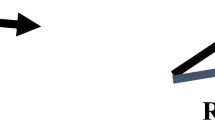Abstract
The recent structural reforms in New Zealand education have given schools and teachers unprecedented freedom in curricular design and delivery. Using official educational award statistics for 2004 and data arising from a study of 23 schools' upper secondary science curricula in the same year, this study represents an early monitoring of the impact of the reforms on upper secondary enrolments and course compilations in the physical sciences using biology as a reference point. Enrolments in physics and chemistry courses relative to biology did not appear to have changed, but there had been an expansion of physical science education through combined science programmes in years 12 and 13, although the profile of physical science in these tended to be low. Teachers exhibited a strong liking for highly focussed laboratory-based internally assessed modules, and it is recommended that curriculum designers provide a greater variety of internally-assessed modules specifically targeting unconventional physical science programmes.
Similar content being viewed by others
References
Atkin, J.M. & Black, P. (2003). Inside science education: A history of policy change. NY: Columbia University Teachers College.
Bell, B., Jones, A. & Carr, M. (1995). The development of the recent national New Zealand science curriculum. Studies in Science Education, 26, 73–105.
Bordt, M., De Brouker, P., Read, C., Harris, S. & Zhang, Y. (2001). Determinants of science and technology skills: Overview of the study. Education Quarterly Review, 8, 8–11.
Boyd, S., McDowall, S. & Cooper, G. (2002). Innovative pathways from school: The case studies: Phase 1 report. Wellington: New Zealand Council for Educational Research.
Cleaves, A. (2005). The formation of science choices in secondary school. International Journal of Science Education, 27, 471–486.
Eijkelhof, H. & Voogt, P. (2001). Netherlands. In Science education for contemporary society: Problems, issues and dilemmas (pp. 93–98). Geneva: International Bureau for Education, UNESCO.
European Commission, (2004). Increasing human resources for science and technology in Europe. Retrieved February 12, 2005 from http://europa.eu.int/comm/research/conferences/2004/sciprof/publications_en.html.
Fullarton, S., Walker, M., Ainley, J. & Hillman, K. (2003). Patterns of participation in year 12. Longitudinal Studies of Australian Youth (LSAY) Research Report 33. Camberwell: ACER.
Garg, K. & Gupta, B. (2003). Decline in science education in India: A case study at +2 and undergraduate level. Current Science, 84, 1198–1201.
Hart, C. (2002). Framing curriculum discursively: Theoretical perspectives on the experience of VCE physics. International Journal of Science Education, 24, 1055–1077.
Hipkins, R., Vaughan, K., Beals, F., & Ferral, H. (2004). Learning curves: Meeting student learning needs in an evolving qualifications regime – shared pathways and multiple tracks: A second report. Wellington: New Zealand Council for Educational Research.
Keeves, J. & Aikenhead, G. (1995). Science curricula in a changing world. In B.J. Fraser & H.J. Walberg (Eds.), Improving science education. The International Academy of Education: Chicago.
Lindahl, B. (2003). Lust att lära naturvetenskap och teknik? En longitudinell studie om vägen till gymnasiet. [trans. Pupils’ responses to school science and technology? A longitudinal study of pathways to upper secondary school] (Dissertation, Göteborg Studies in Educational Sciences 196), Göteborg: Acta Universitatis Gothoburgensis.
Lyons, T. (2003). Decisions by science proficient year 10 students about post- compulsory high school science enrolment: A sociocultural exploration. PhD Thesis, University of New England, Australia.
Millar, R., Holman, J.S., Hunt, A., Lazonby, J. & Milner, B. (2002). 21st Century Science GCSE pilot development: Final report to QCA, University of York Science Education Group.
Ministry of Education, Culture, Sports, Science and Technology (2003). Human resource in science and technology required of Japan in the future. Government white paper on science and technology. Tokyo: Monbukagakusho (MEXT) Retrieved May 12, 2004 from http://www.mext.go.jp/hakusyo/book/hpag200301/hpag200301_1_001.html.
National Science Foundation (2002). Science and engineering indicators 2002. Retrieved Febuary 4, 2004 from http://www.nsf.gov/sbe/srs/seind02/c0/c0s1.htm.
New Zealand Government (1989). 1989 Education Act. Wellington: Author.
New Zealand Ministry of Education (1999). The National Qualifications Framework of the future: White paper. Wellington: Author.
New Zealand Qualifications Authority (2003). Secondary qualifications statistics 2002 – Final report. Wellington: Author.
New Zealand Qualifications Authority (2004). Secondary qualifications statistics 2003 – Final report. Wellington: Author.
New Zealand Qualifications Authority (2005). Interim 2004 statistics retrieved 13 August, 2005 from http://www.nzqa.govt.nz/qualifications/ssq/statistics.
Osborne, J. & Collins, S. (2000). Pupils' and parents' views of the school science curriculum. London: Kings College.
Philips, D. (2003,). Lessons from New Zealand’s National Qualifications Framework. Journal of Education and Work, 16, 289–303.
Spall, K., Dickson, D., & Boyes, E. (2004). Development of school students’ constructions of biology and physics. International Journal of Science Education, 26, 787–803.
Strathdee, R. & Hughes, D. (2001). The National Qualifications Framework and the discouraged worker effect. New Zealand Journal of Educational Studies, 36, 155–169.
Van Aalsvoort, J. (2004). Logical positivism as a tool to analyse the problem of chemistry’s lack of relevance in secondary school chemistry education. International Journal of Science Education, 26, 1151–1168.
Vlaardingerbroek, B. (1999). New Zealand Sixth Form Certificate assessment and policy issues 1986–1997: A case study – the sciences. International Journal of Educational Reform, 8, 45–52.
Vlaardingerbroek, B. (2005a). Smoothing the secondary-tertiary education interface: Developments in New Zealand following the National Qualifications Framework reforms. Journal of Vocational Education and Training, 57, 411–418.
Vlaardingerbroek, B. (2005b). Standards-based assessment with a difference: The impact of the New Zealand National Qualifications Framework reforms on secondary school science. International Journal of Educational Reform, 14, 321–336.
Vlaardingerbroek, B. (2006). Transition to tertiary study in New Zealand under the National Qualifications Framework and ‘the ghost of 1888.’ Journal of Further and Higher Education, 30, 75–85.
Author information
Authors and Affiliations
Corresponding author
Additional information
An erratum to this article can be found at http://dx.doi.org/10.1007/s10763-007-9076-9
Rights and permissions
About this article
Cite this article
Vlaardingerbroek, B., Taylor, T.G.N. Upper Secondary School Physical Science Curricula in New Zealand after the National Qualifications Framework Reforms. Int J Sci Math Educ 5, 263–280 (2007). https://doi.org/10.1007/s10763-006-9032-0
Received:
Accepted:
Published:
Issue Date:
DOI: https://doi.org/10.1007/s10763-006-9032-0




